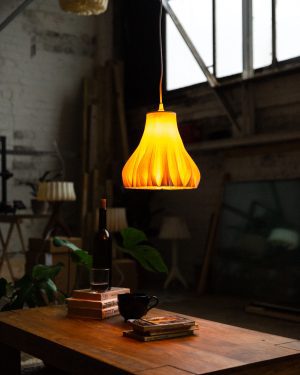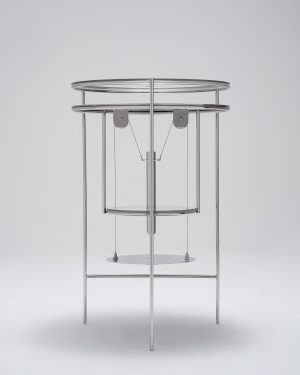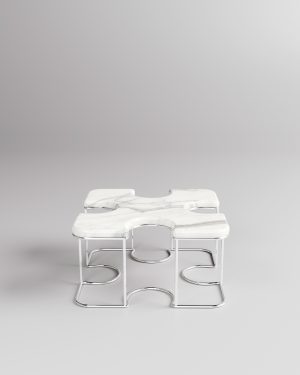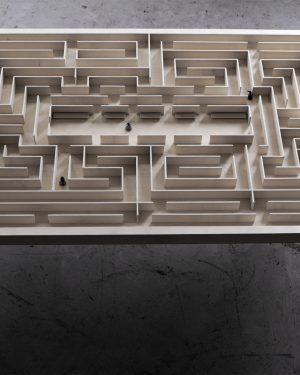

Conceptual Designs That Push Boundaries
Conceptual Design is a groundbreaking movement that breaks free from the confines of traditional design. Rooted in abstraction and intellectualism, it encourages designers to push the boundaries of creativity and engage in profound storytelling through their pieces. Influenced by movements such as Fluxus and Dadaism, this style embraces the use of unconventional materials, vibrant colors, and abstract shapes, resulting in functional artworks that challenge perceptions and evoke emotions.
What is Conceptual Design?
Conceptual Design is an innovative and boundary-pushing style that emerged in the late 20th century. It challenges traditional design norms by prioritizing ideas, concepts, and philosophies over practicality and functionality. This avant-garde movement fosters experimentation and encourages designers to think beyond conventional constraints.


The Origins of Conceptual Design
Conceptual Design emerged in the 1960s as a powerful response to the perceived rigidity of modernism and the growing commercialization within the design industry. Dissatisfied with the conformity prevalent in traditional design approaches, designers sought a fresh perspective that would prioritize artistic expression and profound conceptual thinking. Drawing inspiration from avant-garde movements like Fluxus, Dadaism, and conceptual art, Conceptual Design aimed to break free from conventional constraints and embrace a more abstract, intellectual, and thought-provoking aesthetic. Originating in cultural hubs such as New York, London, and Tokyo, this movement rapidly spread its influence worldwide, igniting the imaginations of creatives across the globe.




See More Like This: Visit Our Online Gallery of Conceptual Designs
What are the Key Characteristics of Conceptual Design?
Conceptual Design is characterized by several key features that set it apart from traditional design approaches. These characteristics include:
- Emphasis on abstract concepts and ideas.
- Non-conformity and experimentation.
- Draws inspiration from multiple disciplines.
- Minimalist aesthetics with contextual relevance.


Current Views in Contemporary Art and Design
Contemporary art and design are undergoing a transformative evolution, particularly in the realm of conceptual design. This dynamic fusion of innovation and societal relevance blurs the conventional boundaries between art and design, seamlessly integrating cutting-edge technology. Embracing sustainability and interactivity, this movement champions inclusivity, while its commitment to addressing pertinent issues reshapes the landscape of artistic expression, ushering in an era of boundless possibilities.
Read Now: 13 Unique Conceptual Seats for Every Home
The Impact of Conceptual Design on the Art World
Conceptual Design emerged as a revolutionary paradigm shift in the art world, prioritizing the exploration of ideas and concepts. It boldly transcended traditional boundaries, encouraging interdisciplinary approaches and fostering a rich landscape of creativity. As a powerful catalyst for social change, it engaged audiences through interactive and thought-provoking experiences. Its impact also resonated in art education, reshaping curricula and nurturing critical thinking. By challenging the conventional notion of artistic value, Conceptual Design left an indelible mark on the dynamic and ever-evolving art world, where its enduring influence continues to inspire and spark innovation.


Read Now: Explore the Top 10 Contemporary Conceptual Lighting Designs
Conclusion
Conceptual Design stands as a revolutionary force that has redefined the very essence of art and design. By placing ideas and concepts at the forefront, it has transcended traditional boundaries and unleashed a wave of creativity that embraces interdisciplinary exploration. Its impact on the art world has been far-reaching, inspiring artists to engage with pressing social issues and fostering a deeper connection with audiences through interactive experiences. Conceptual Design’s enduring influence can be seen in the way it has shaped art education and challenged conventional notions of artistic value. As we move forward, this avant-garde movement continues to ignite innovation, encouraging us to think beyond the confines of tradition and explore the boundless possibilities of artistic expression.




Read Now: 15 Conceptual Tables Unveiling the Essence of Design
Discover Conceptual Design on Adorno
-


 Budge – Red Oak Stool€2.188
Budge – Red Oak Stool€2.188 -


 Ceramic Loop Hanger€163 incl. tax
Ceramic Loop Hanger€163 incl. tax -

 Dough Supra Table – Oak wood / Stainless Steel€3.375 incl. tax
Dough Supra Table – Oak wood / Stainless Steel€3.375 incl. tax -

 Marbelicious – Green Marble Storage Console€11.563 incl. tax
Marbelicious – Green Marble Storage Console€11.563 incl. tax -

 Riot Shield – Stainless Steel Screen€5.500 incl. tax
Riot Shield – Stainless Steel Screen€5.500 incl. tax -

 Flywater Occasional Table€1.916 incl. tax
Flywater Occasional Table€1.916 incl. tax -

 Arco – Contemporary Two-Block Coffee Table€2.625 – €3.625 incl. tax
Arco – Contemporary Two-Block Coffee Table€2.625 – €3.625 incl. tax -

 Trn / Model D1 Ceramic Pendant Light€1.285 incl. tax
Trn / Model D1 Ceramic Pendant Light€1.285 incl. tax -

 Ventura Cabinet€6.750 incl. tax
Ventura Cabinet€6.750 incl. tax -

 Le Sentier Des Ocres – Wool Landscape Rug€6.250 incl. tax
Le Sentier Des Ocres – Wool Landscape Rug€6.250 incl. tax -

 “Weaver Nest” Bio Plastic Suspension Lamp€5.000 incl. tax
“Weaver Nest” Bio Plastic Suspension Lamp€5.000 incl. tax -


 Pinnacle Of Aphelion – Aluminium Table Lamp€2.364 incl. tax
Pinnacle Of Aphelion – Aluminium Table Lamp€2.364 incl. tax -

 The Last Bench – Wood And Steel Bench€3.875 incl. tax
The Last Bench – Wood And Steel Bench€3.875 incl. tax -

 ARCHITECTURE PARLANTE / FOOTISH CLOSET€7.875 incl. tax
ARCHITECTURE PARLANTE / FOOTISH CLOSET€7.875 incl. tax -

 Bark – Cast Aluminum Coffee Table€12.250
Bark – Cast Aluminum Coffee Table€12.250 -

 Evil Eye Glass Mirror – Large€850 incl. tax
Evil Eye Glass Mirror – Large€850 incl. tax -

 Lucrecia – Marble Console€10.710
Lucrecia – Marble Console€10.710 -

 Sports at Home I Rug€8.125 incl. tax
Sports at Home I Rug€8.125 incl. tax -

 Arresø – Wool Landscape Rug€3.125 incl. tax
Arresø – Wool Landscape Rug€3.125 incl. tax -

 Bosei Gypsum Chandelier€18.750 – €36.250 incl. tax
Bosei Gypsum Chandelier€18.750 – €36.250 incl. tax -

 Wrench – Low Zigzag Table€2.500 incl. tax
Wrench – Low Zigzag Table€2.500 incl. tax -

 H 1 L – Bio Polymer Pendant Lamp€313 incl. tax
H 1 L – Bio Polymer Pendant Lamp€313 incl. tax -

 Objects Of Function_shining No.2302 – Stainless Steel Light€4.000 incl. tax
Objects Of Function_shining No.2302 – Stainless Steel Light€4.000 incl. tax -

 Playful Happiness – Ceramic Loop Hanger€163 incl. tax
Playful Happiness – Ceramic Loop Hanger€163 incl. tax










